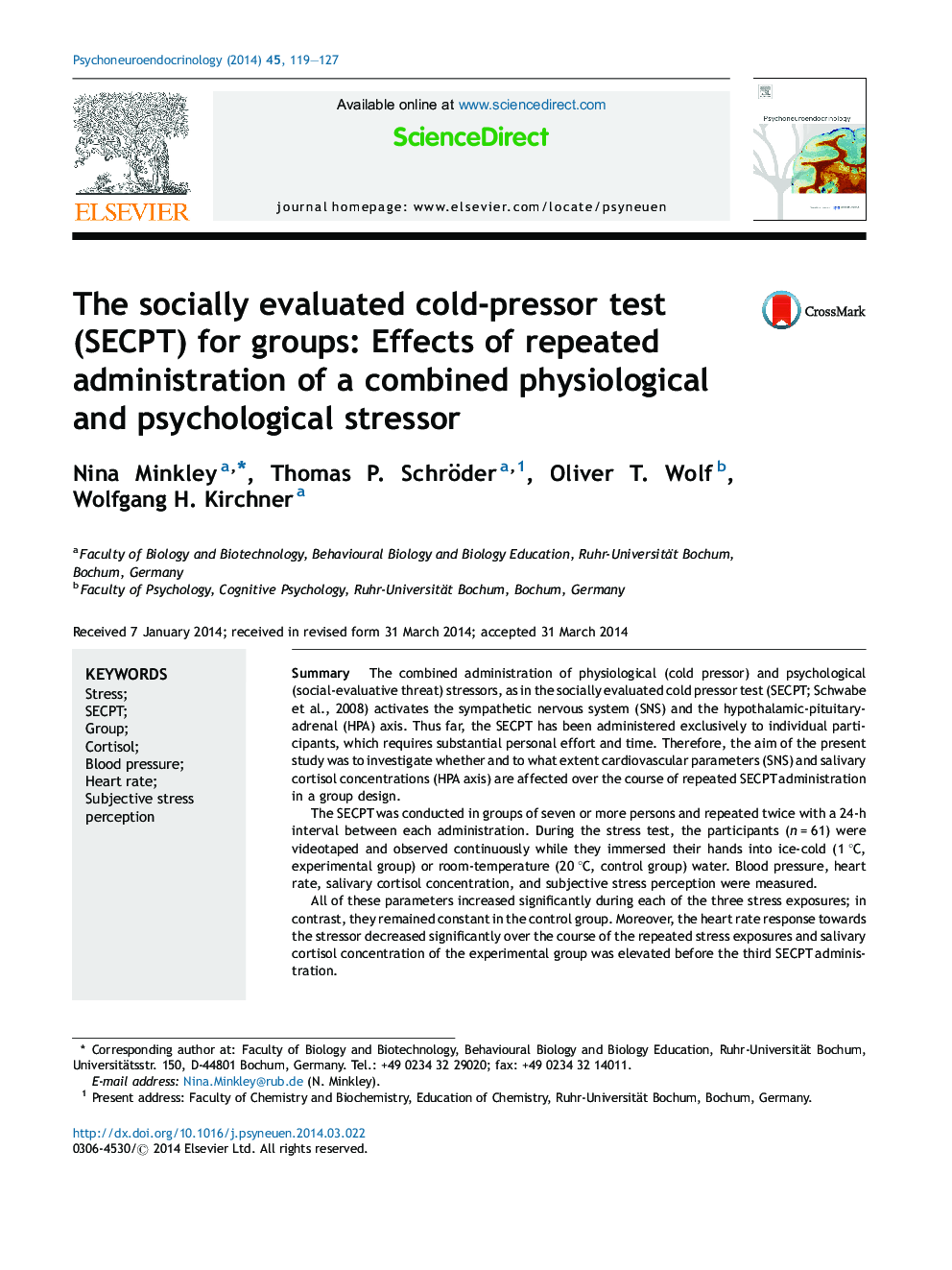| Article ID | Journal | Published Year | Pages | File Type |
|---|---|---|---|---|
| 336365 | Psychoneuroendocrinology | 2014 | 9 Pages |
SummaryThe combined administration of physiological (cold pressor) and psychological (social-evaluative threat) stressors, as in the socially evaluated cold pressor test (SECPT; Schwabe et al., 2008) activates the sympathetic nervous system (SNS) and the hypothalamic-pituitary-adrenal (HPA) axis. Thus far, the SECPT has been administered exclusively to individual participants, which requires substantial personal effort and time. Therefore, the aim of the present study was to investigate whether and to what extent cardiovascular parameters (SNS) and salivary cortisol concentrations (HPA axis) are affected over the course of repeated SECPT administration in a group design.The SECPT was conducted in groups of seven or more persons and repeated twice with a 24-h interval between each administration. During the stress test, the participants (n = 61) were videotaped and observed continuously while they immersed their hands into ice-cold (1 °C, experimental group) or room-temperature (20 °C, control group) water. Blood pressure, heart rate, salivary cortisol concentration, and subjective stress perception were measured.All of these parameters increased significantly during each of the three stress exposures; in contrast, they remained constant in the control group. Moreover, the heart rate response towards the stressor decreased significantly over the course of the repeated stress exposures and salivary cortisol concentration of the experimental group was elevated before the third SECPT administration.Our results indicate that the group SECPT activates the SNS and the HPA, leading to increased blood pressure, heart rate, and cortisol concentration. Moreover, the repeated administration leads to habituation exclusively of heart rate.
